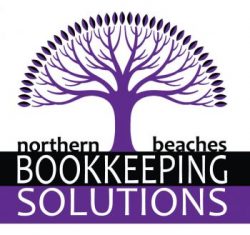Single Touch Payroll (STP) Phase 2 is the next step in the Australian government’s initiative to streamline payroll reporting for businesses. It builds on the existing STP framework, with additional data requirements designed to provide more detailed information to government agencies. Here’s what small businesses need to know about STP Phase 2 reporting.
What Is Single Touch Payroll (STP) Phase 2?
STP Phase 2 expands on the existing STP system by requiring employers to report additional payroll information each time they process a pay run. This includes more comprehensive data about employee earnings, tax, and superannuation, which is shared with multiple government agencies, including the ATO, Services Australia, and the Fair Work Commission.
What Are the Key Changes in STP Phase 2?
STP Phase 2 introduces several new reporting requirements that businesses need to comply with:
- Income Stream Reporting: Employers must categorise payments into specific income streams, such as salary and wages, allowances, bonuses, and overtime.
- Employment and Taxation Information: Additional data, such as employment type (full-time, part-time, casual), tax treatment codes, and reason for termination, must be reported.
- Disaggregation of Gross Income: Instead of reporting total gross income as a lump sum, employers must now itemise earnings, such as base salary, allowances, and bonuses.
- Reporting Child Support Deductions: STP Phase 2 requires employers to report child support deductions and garnishees directly to the relevant authorities.
How to Prepare for STP Phase 2 Reporting
Transitioning to STP Phase 2 may require adjustments to payroll processes and systems. Here are key steps to prepare:
1. Review Payroll Software:
Ensure that your payroll software is STP Phase 2 compliant. Most major software providers, including Xero, MYOB, and QuickBooks, have implemented updates to meet the new reporting requirements.
2. Update Employee Records:
Collect additional data required under STP Phase 2, such as employee income stream categories, employment type, and tax treatment codes. Verify the accuracy of employee details to prevent reporting errors.
3. Adjust Payroll Processes:
Ensure that payroll staff are trained in the new reporting requirements and understand how to accurately categorise payments and report disaggregated income.
4. Implement Reporting Controls:
Establish internal controls to review payroll data before submission. Double-check that all required information is included and accurately categorised under STP Phase 2 guidelines.
5. Communicate with Employees:
Inform employees about the changes to STP reporting, especially if they receive new income stream categories or child support deductions. Clear communication helps prevent misunderstandings when employees review their income statements.
Deadlines for STP Phase 2 Reporting
The ATO has set specific deadlines for STP Phase 2 reporting, with staggered transition dates depending on your payroll software provider. Check with your software provider to confirm the compliance deadline and ensure that your systems are ready for the transition.
Penalties for Non-Compliance
Failing to comply with STP Phase 2 reporting requirements can result in penalties from the ATO. Businesses that do not report accurately or miss reporting deadlines may be subject to fines and increased scrutiny. It’s essential to review reporting processes and ensure full compliance before the transition deadline.
Conclusion:
STP Phase 2 represents a significant change in payroll reporting for Australian businesses. By preparing your payroll systems, updating employee records, and implementing strong reporting controls, you can ensure a smooth transition to the new reporting requirements. Staying compliant not only helps you avoid penalties but also provides more accurate financial data to government agencies, supporting better business management and decision-making.
